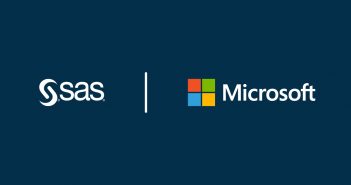 Recently we announced a new strategic partnership with Microsoft to further shape the future of AI and analytics in the cloud. This commitment will make it easy for SAS customers to move their analytics workloads to the cloud. And it will introduce SAS technologies to millions of Azure customers through APIs and deeper integrations that can enhance existing applications with analytics.
Recently we announced a new strategic partnership with Microsoft to further shape the future of AI and analytics in the cloud. This commitment will make it easy for SAS customers to move their analytics workloads to the cloud. And it will introduce SAS technologies to millions of Azure customers through APIs and deeper integrations that can enhance existing applications with analytics.
To help illustrate how you can use SAS on Azure, I'm sharing three inspiring examples from the 2020 SAS hackathon. Participants in this event were challenged to solve problems related to the United Nations Global Goals for Sustainable Development using SAS® Viya®. At SAS, the Global Goals have provided an organizing structure for many of our social responsibility and innovation efforts, so they also make great inspiration for a hackathon.
Submissions for the hackathon ranged from optimizing resources at refugee camps to encouraging more sustainable consumer habits. A technology team developed each application in partnership with a nonprofit to solve existing and immediate problems. The three revolutionary projects featured here all use SAS Viya running on Microsoft Azure.
Analyzing honeybee dance moves leads more bees to food
Did you know honeybees perform a “waggle dance” to communicate the location of food to their hive mates?
In partnership with Beefutures, a team from Amesto NextBridge used computer vision and machine learning to decode the dance moves and relocated hives to better locations with more food sources when necessary.
“We implemented this information, along with hive coordinates, sun angle, time of day and agriculture around the hives into an interactive map in SAS Viya, and then beekeepers can easily decode this hive information and relocate to better suited environments if necessary,” said Kjetil Kalager, lead of the Amesto NextBridge and Beefutures team.
The Amesto NextBridge team did some amazing work with this application and with the video that explains the project. It is compelling and visually engaging, and the winning project could benefit honeybee and human food supplies. By applying knowledge of bee behavior, visual data and machine learning, it is clear that we can gain useful information to improve bee health.
Simplify climate-friendly choices with an app
What if you had access to a personal climate adviser that could intelligently devise a plan for reducing your climate impact customized to your lifestyle? TietoEvry worked with the city of Trondheim, Norway, to develop an app that does just that. By 2030, Trondheim wants to make it easy for all its citizens to make climate friendly decisions in their everyday lives.
A machine learning model identifies climate friendly actions that are easiest for citizens to take. Participating citizens can opt in to share their data and calculate their unique carbon footprint, then take simple, tailored actions to reduce it.
SAS microanalytics services integrate the program and its machine learning techniques into other mobile and desktop applications via APIs so alerts and recommendations can be sent from relevant channels.
Recommendations improve over time as the model learns which prompts actually lead to changed behaviors. For example, if I am booking a flight, the application might suggest an alternate route or an alternate mode of transportation. If I am grocery shopping, it might suggest I buy more vegetables and less meat. Depending on how I respond, it will make more suggestions that appeal to me.
The completeness of vision in this solution is outstanding. The impressive collection of data partners and municipal partners shows great collaboration and convinces me the application can have a real impact for the citizens of Trondheim.
I especially enjoy the premise that citizens, when presented with personal information about climate impact, are more likely to make positive changes in behavior and adjust that impact. The gamification aspects in the app can make “nudging for good” a compelling experience.
Stocking refugee camps with the right supplies
Did you know more than $1 billion of humanitarian aid funding is wasted each year due to outdated supply chain management practices in refugee camps? With as many as 70 million people displaced worldwide and 37,000 forced to flee their homes every day, providing essential supplies to keep them all safe is a complex endeavor.
The International Organization for Migration enlisted Notilyze and ELVA to develop a Camp Forecast tool using forecasting and demand planning to ensure an equitable distribution of supplies.
The solution uses satellite imagery and object detection models to estimate the number of people in 50 refugee camps around Nigeria. The satellite data reduces manual input requirements from camp staff and provides near-real-time input for the forecasts.
The resulting data visualizations improved camp forecasting, reduced waste of perishable goods, increased resource effectiveness and improved cross-camp collaboration.
The long-term impact of this solution is exciting, especially if it can be used in more places around the world. The team explains, for example, how one camp with a surplus of lifesaving medicine can now collaborate more easily to get that medicine to the camps that need it most.
What is next in the cloud?
Now that you have seen some inspiring examples of SAS on Azure, take some time to think about what you could accomplish by moving your analytics to the cloud. Could you do more with streaming data? Could you use microservices to embed analytics into existing applications and services? Could you improve existing processes for demand planning or resource allocation?
Next steps:
-
Get involved in a future SAS hackathon.
-
Become inspired by SAS and Microsoft.
-
Make a difference with the Global Goals.

